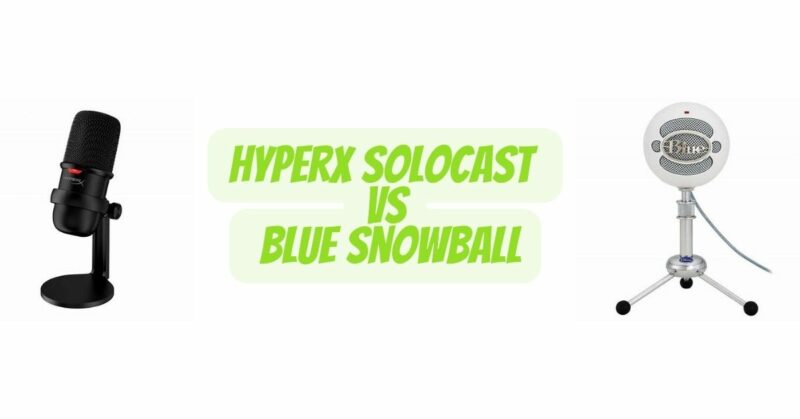When it comes to content creation, having clear and professional audio is crucial. USB microphones have gained popularity among streamers, podcasters, and other creators for their ease of use and excellent sound quality. In this article, we will compare two popular USB microphones: the HyperX SoloCast and the Blue Snowball. Both microphones offer unique features and performance capabilities. By examining their design, features, sound quality, and value for money, we aim to help you make an informed decision on which microphone best suits your needs.
Design and Build Quality : The design and build quality of a USB microphone play a significant role in its overall usability and durability. The HyperX SoloCast features a sleek and compact design with a cylindrical shape. It has a sturdy metal stand that provides stability during recording. The microphone itself is well-built, with a durable construction that feels reliable. The SoloCast also includes an adjustable swivel mount, allowing for easy positioning.
In contrast, the Blue Snowball has a more distinctive design with its spherical shape. It comes with a desktop stand that provides stability and can be easily adjusted to find the optimal recording angle. The Snowball’s build quality is decent, although some users have reported that it feels slightly less robust compared to the SoloCast.
Features and Functionality: Both the HyperX SoloCast and the Blue Snowball offer a range of features that enhance the recording experience. The SoloCast features a cardioid polar pattern, which is ideal for capturing sound from a single direction and reducing background noise. It also includes a tap-to-mute sensor and an LED indicator to easily monitor the microphone’s status. The SoloCast is plug-and-play, requiring no additional drivers for setup.
On the other hand, the Blue Snowball offers two switchable polar patterns: cardioid and omnidirectional. This versatility allows for different recording scenarios, whether you want to focus on a single sound source or capture audio from all directions. The Snowball also features a -10dB pad switch, which reduces sensitivity for louder sound sources. It is worth noting that the Snowball may require driver installation on certain operating systems.
Sound Quality : Sound quality is a crucial aspect when choosing a USB microphone, and both the HyperX SoloCast and the Blue Snowball deliver impressive results. The SoloCast offers a 24-bit audio resolution with a sampling rate of 48kHz, resulting in clear and detailed sound reproduction. Its cardioid polar pattern effectively captures the intended sound source while minimizing background noise. The SoloCast’s built-in pop filter reduces plosive sounds for a smoother recording experience.
Similarly, the Blue Snowball provides a high-quality audio experience. It offers a 16-bit audio resolution with a sampling rate of 44.1kHz, which delivers clear and well-defined sound. The Snowball’s switchable polar patterns allow for versatile recording options. The cardioid pattern isolates the sound source, while the omnidirectional pattern captures sound from all directions. However, it’s important to note that the Snowball’s lack of a built-in pop filter may result in more noticeable plosive sounds.
Value for Money : When it comes to value for money, the HyperX SoloCast and the Blue Snowball offer different advantages. The SoloCast is priced competitively and provides excellent sound quality, making it a great choice for content creators on a budget. Its compact design and easy setup add to its overall value. The SoloCast’s robust build quality and integrated pop filter are notable features at its price point.
On the other hand, the Blue Snowball has established itself as a reliable USB microphone for many years. Its sound quality and versatility make it suitable for various recording scenarios. While it is generally more expensive than the SoloCast, the Snowball offers the added benefit of switchable polar patterns, allowing for greater flexibility in recording options. Additionally, the Snowball’s reputable brand and long-standing popularity contribute to its value for money.
Conclusion : Choosing between the HyperX SoloCast and the Blue Snowball largely depends on your specific needs and preferences. The SoloCast offers a sleek design, excellent sound quality, and an affordable price point, making it an attractive option for budget-conscious creators. On the other hand, the Blue Snowball provides versatile recording capabilities, switchable polar patterns, and a well-established reputation in the market. Consider your recording requirements, budget, and desired features to determine which USB microphone best suits your content creation needs.


